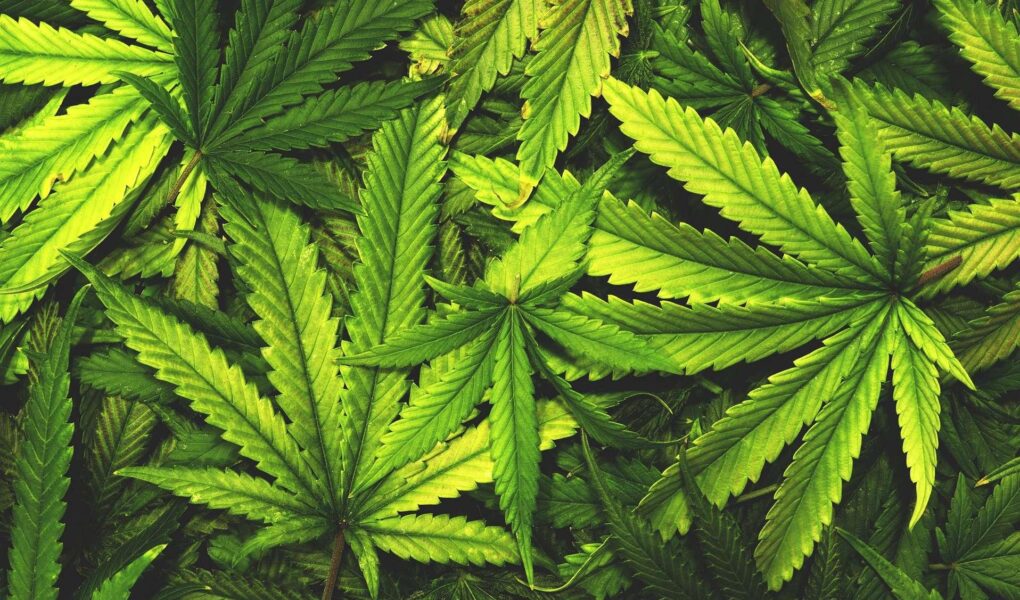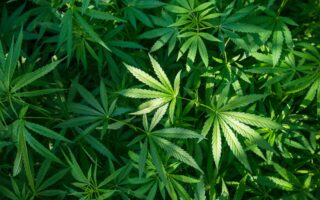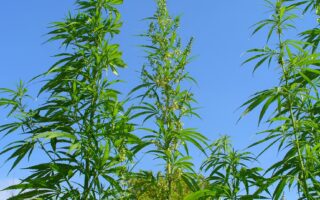Unlocking the Green Enigma: Exploring the Structure of Cannabis
As the world increasingly embraces the multifaceted plant known as cannabis, a veil of intrigue surrounds its very essence. Beyond the cultural narratives and evolving legal frameworks lies a complex structure that merits a closer inspection. Cannabis is not merely a botanical specimen; it is a kaleidoscope of compounds, cannabinoids, terpenes, and flavonoids, each contributing to its unique characteristics and effects. Understanding the intricate architecture of cannabis is essential not only for cultivators and consumers but also for researchers and policymakers navigating its vast potential. In this article, we will delve into the anatomy of cannabis, revealing the secrets hidden within its various components and how they interact to shape the plant’s functionality, efficacy, and allure. Join us on this journey as we dissect the fascinating structure of cannabis and uncover the science behind its storied legacy.
Table of Contents
- Understanding the Intricate Anatomy of Cannabis Plants
- Exploring Cannabinoid Profiles and Their Impact on Effects
- The Role of Terpenes in Flavor and Aroma Enhancement
- Cultivation Techniques for Maximizing Cannabis Structure and Quality
- Q&A
- The Way Forward
Understanding the Intricate Anatomy of Cannabis Plants
The cannabis plant is a complex organism characterized by a distinctive structure that supports its various functions. At first glance, one might appreciate its vibrant green leaves and thick stems, but a deeper exploration reveals a fascinating absorption system. Each part of the plant plays a crucial role in growth and reproduction. Key components include:
- Roots: Anchor the plant, absorbing water and nutrients.
- Stems: Provide support and transport nutrients between roots and leaves.
- Leaves: Essential for photosynthesis, they capture sunlight and convert it into energy.
As we examine the reproductive structures, the differences between male and female plants become apparent. The female cannabis plants are prized for their ability to produce flowers, which contain the coveted cannabinoids. These flowers emerge from the calyxes, which are part of the inflorescence, where pollen is received and fertilization occurs. The male plants, on the other hand, produce pollen sacs to fertilize the female flowers, playing a critical role in the life cycle of the plant. Below is a comparative overview of the male and female structures:
| Type | Characteristics |
|---|---|
| Male | Pollen sacs, taller and less dense foliage, responsible for fertilization. |
| Female | Produces flowers and buds rich in cannabinoids, shorter and bushier. |
Exploring Cannabinoid Profiles and Their Impact on Effects
Delving into the diverse world of cannabinoids reveals a complex tapestry of compounds, each possessing unique characteristics that influence the overall experience of cannabis. Among the most well-known cannabinoids are THC (tetrahydrocannabinol) and CBD (cannabidiol), but the cannabis plant actually produces over 100 different cannabinoids. The interplay between these compounds often dictates not just the medicinal benefits, but also the psychoactive effects experienced by users. Factors such as dosage, strain, and the presence of other cannabinoids can significantly alter how a particular strain affects the user, underscoring the importance of understanding cannabinoid profiles.
Moreover, the terpene profile in cannabis strains plays a crucial role in the effects and aroma, complementing the cannabinoids. For example, terpenes like myrcene are believed to enhance sedative effects, while limonene may uplift moods and provide stress relief. When analyzing the impact of cannabinoids and terpenes, it’s essential to consider their synergy—a concept often referred to as the “entourage effect.” This phenomenon suggests that the combined influence of cannabinoids and terpenes can produce more significant effects than individual components alone. Below is a simple table highlighting some common cannabinoids and their associated effects:
| Cannabinoid | Effects |
|---|---|
| THC | Elevated mood, increased appetite, potential anxiety |
| CBD | Relaxation, inflammation reduction, anxiety relief |
| CBC | Pain relief, anti-inflammatory, mood enhancement |
| CBG | Neuroprotective, anti-inflammatory, potential antibacterial |
The Role of Terpenes in Flavor and Aroma Enhancement
Terpenes are the fragrant compounds found in many plants, including cannabis, and they play a profound role in enhancing the overall sensory experience. These organic compounds not only contribute to the distinctive flavor profiles but also interact synergistically with cannabinoids, influencing the overall effects and therapeutic potential of different cannabis strains. Some common terpenes and their attributes include:
- Myrcene: Earthy and musky, often associated with an intense body relaxation.
- Limonene: Zesty and citrusy, known for uplifting moods and mitigating stress.
- Pinene: Fresh and piney, believed to promote mental clarity and alertness.
- Caryophyllene: Spicy and peppery, unique for its potential anti-inflammatory properties.
The interaction of terpenes with cannabinoids forms what is known as the “entourage effect.” This phenomenon suggests that the combination of various compounds in cannabis can produce effects that are greater than if they were used individually. To illustrate, consider the following table outlining some common terpenes and their potential effects when paired with specific cannabinoids:
| Terpene | Effect | Commonly Found In |
|---|---|---|
| Myrcene | Relaxation and sedative | Indica strains |
| Limonene | Elevates mood and reduces anxiety | Citrus strains |
| Pinene | Enhances focus and memory | Haze strains |
| Caryophyllene | Anti-inflammatory and analgesic | Spicy strains |
As consumers become increasingly discerning about their cannabis choices, understanding the role of terpenes in flavor and aroma becomes essential. This knowledge can help users select products that not only suit their taste preferences but also target specific effects and therapeutic benefits. The diverse array of terpenes acts as nature’s intricate flavor palette, allowing cannabis cultivators and enthusiasts to explore an almost endless combination of tastes and aromas, thereby enriching the overall experience of this remarkable plant.
Cultivation Techniques for Maximizing Cannabis Structure and Quality
Creating a robust framework for cannabis plants requires a combination of strategic techniques designed to enhance both structure and overall quality. One of the most effective methods is pruning, which not only encourages healthy growth but also helps to regulate light distribution throughout the canopy. By selectively removing branches and leaves, growers can focus the plant’s energy on fewer bud sites, resulting in denser and more potent flowers. Additional techniques to consider include:
- Low Stress Training (LST): Gently bending and tying down branches promotes a more horizontal growth pattern, allowing sunlight to reach all parts of the plant.
- Top Dressing: This involves adding nutrient-rich materials around the base of the plant to improve soil quality and provide essential nutrients.
- Defoliation: Strategically removing excess foliage encourages airflow and light penetration, leading to bigger, healthier buds.
Employing the right nutrient regimen is equally critical for optimizing structure. Cannabis plants thrive on a well-balanced diet that varies throughout their growth cycles. To streamline nutrient administration, consider using a simple table to manage the feeding schedule, ensuring your plants receive the right elements at the right time:
| Growth Stage | Nutrients Needed | Feeding Frequency |
|---|---|---|
| Seedling | Low Nitrogen | Once a week |
| Vegetative | High Nitrogen, Moderate Phosphorus | Every 3-5 days |
| Flowering | Low Nitrogen, High Phosphorus | Once a week |
Q&A
Cannabis Structure: Q&A
Q1: What exactly is the basic structure of cannabis?
A1: At its core, cannabis is a complex plant featuring a myriad of structures. Its primary scientific classification is Cannabis sativa, though it has several subspecies and hybrids. Botanically, cannabis plants are distinguished into two main structures: the vegetative stage, where they develop leaves and roots, and the flowering stage, where the buds that contain cannabinoids form.
Q2: What are cannabinoids, and how are they connected to cannabis structure?
A2: Cannabinoids are the natural compounds found in cannabis that interact with the human endocannabinoid system. The structure of these compounds is vital; they typically consist of a phenolic structure, which allows them to bind with cannabinoid receptors in the body. THC (tetrahydrocannabinol) and CBD (cannabidiol) are two prominent examples, with distinct chemical structures influencing their effects and interactions.
Q3: How does the physical structure of the cannabis plant impact its growth and potency?
A3: The physical structure of the cannabis plant, including its stem diameter, leaf arrangement, and bud density, plays a crucial role in its overall health and potency. A robust stem can support larger buds, while a well-developed root system enhances nutrient absorption. Additionally, the arrangement of leaves influences light penetration and can lead to improved photosynthesis, directly affecting the plant’s growth and cannabinoid production.
Q4: Could you explain the significance of trichomes in the cannabis structure?
A4: Absolutely! Trichomes are tiny, hair-like structures that cover the surface of cannabis buds and leaves. These resinous glands are critical as they contain the highest concentration of cannabinoids and terpenes, the fragrant compounds that contribute to the aroma and flavor of cannabis. The density of trichomes can denote the potency of the plant, and their presence is a key factor in determining the overall quality of cannabis products.
Q5: Are there different structural types of cannabis plants?
A5: Yes, there are various structural types, often categorized into three main classifications—indicas, sativas, and hybrids. Indica plants typically have broader leaves and shorter, bushier structures, resulting in higher yields in denser growing spaces. Sativa plants, with their tall and slender form, often take longer to flower, making them ideal for outdoor growth. Hybrids inherit traits from both classifications, showcasing unique features that cater to diverse cultivation needs.
Q6: How does understanding cannabis structure contribute to its cultivation and use?
A6: A comprehensive understanding of cannabis structure is pivotal for growers and users alike. Cultivators leverage this knowledge to optimize growth conditions, select appropriate breeding techniques, and enhance cannabinoid profiles. For users, recognizing the structural differences among cannabis types can guide them in selecting products that align with their desired effects and therapeutic goals.
Q7: why is exploring cannabis structure important?
A7: Exploring the structure of cannabis opens a window into its biological complexity, revealing the intricate relationships between its various components. This understanding is essential for advancing research, improving cultivation methods, and maximizing the potential benefits derived from cannabis in both recreational and medicinal contexts. Thus, deepening our knowledge of cannabis structure is not just a botanical exercise—it’s integral to the future of this remarkable plant.
The Way Forward
As we close the chapter on the intricate world of cannabis structure, it becomes evident that this botanical marvel is more than just a collection of leaves and stems. From the intricate arrangement of cannabinoids and terpenes to the complex pathways that facilitate their production, the architecture of cannabis is a testament to nature’s ingenuity. Understanding its structure not only deepens our appreciation for this plant but also paves the way for innovations in medicine, sustainability, and beyond.
As we navigate the evolving landscape of cannabis research and its myriad applications, we invite you to continue exploring the many dimensions of this fascinating flora. Whether you’re a seasoned enthusiast, a curious newcomer, or a dedicated researcher, there is always more to uncover in the layered tapestry of cannabis. As the science unfolds, so too will our knowledge—and with it, the potential for cannabis to enhance our lives in ways we have yet to imagine. Thank you for joining us on this journey through the intricate structure of cannabis; may it inspire further inquiry and understanding in every corner of our shared experience.


